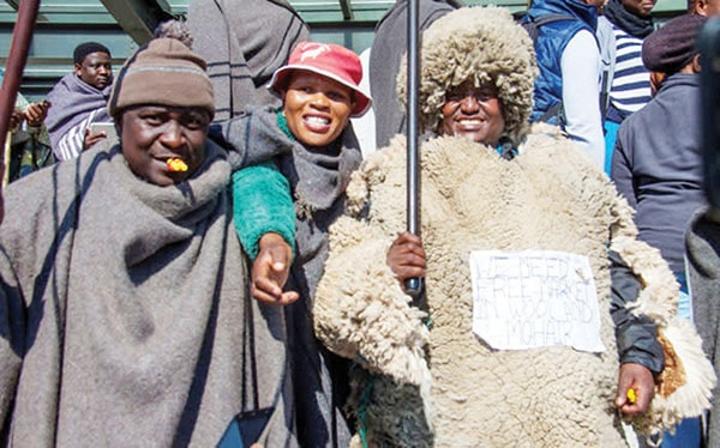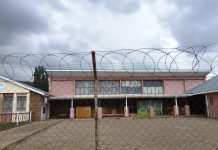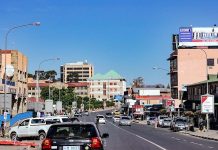Africa-Press – Lesotho. In the recent months the plight of wool and mohair farmers in Lesotho has been taking twisted turns following the shift in policy of the government on the sale/trading of wool and mohair.
Wool and mohair are part of the key contributors to Lesotho’s GDP as the fifth largest export product (3.37% in 2018) and the largest agricultural exports.
Without going into the debate of the whether the new policy is good or bad for the farmers, ‘Bo-ranku li kae’ or ‘Lihoai tsa Farelane le Seiboko’. It is important to reflect back on how the trading of wool and mohair has been conducted in the past. As Internation Fund for Agricultural Development (IFAD) in 2014 noted, marketing of Lesotho’s wool and mohair is unique for smallholder producers.
Individual smallholder producers are marketing most of their fleece wool directly on a major international auction market at Port Elizabeth and Durban in South Africa, where wool and mohair is primarily handled by marketing agent, Boeremakelaars Koöperatief Beperk (BKB).
Lesotho farmers have for decades participated in the existing wool and mohair value chain in South Africa, where the wool and mohair is sold on auction as raw input before it is processed and re-exported to international markets.
In 2018 the government of Lesotho introduced new regulations relating to the marketing and trading of wool and mohair, The Agricultural Marketing (Wool and Mohair Licensing) (Amendment) Regulations No. 65 of 2018.
The regulations forbid anyone to trade in wool and mohair without a licence obtained from the Ministry of Small Businesses, Co-operatives and Marketing.
The regulation further states that the holder of an export licence shall not export wool and mohair unless it is prepared, brokered, traded and auctioned in Lesotho.
Again, as noted earlier, this article is reflecting on the statistical data of the export of wool and mohair by Lesotho to the world since 2006 to 2018, irrespective of where the wool was auctioned.
The data, as reflected in figure 1 below, represents the main export markets for Lesotho wool under Harmonised System Code (HS 51). Since 2012, the two main markets were China and South Africa.
The data reflects an increasing demand from 2006 until 2017 when the overall export value declined from a peak of US$57.5 million (about M800) in 2017 to $41.1 million 2018, a 29% decline of the total value in 2018.
There was a sharp decline of exports to South Africa in the same period, from $38.8 million in 2017 to $16.1 million in 2018, while China increased imports of wool from Lesotho from $18.5 million in 2017 to $24.9 million in 2018.
The first time that China became the largest importer of wool from Lesotho. The reasons for the 40% decline in export value for the wool fall beyond the scope of this article.
Moreover, the article does not reflect on which policy is favourable to the farmers but notes with concern the impact of the decline to the economy and, most importantly to the farmers.
The drastic decline will translate in reduced remuneration of the farmers when compared with the previous years. Also, the assumption is that the level of production was lower in 2018 than in 2017.
It would also be important to reflect on the emergence of China, especially since joining the WTO in 2001. Figure 2 below illustrates an increasing demand for wool by China, the exports of Australia the largest sport of wool to China has been removed as it creates an outlier effect.
Over the years, Lesotho has become the ninth largest exporter of wool to China a remarkable performance since prior to 2013 there was no export of wool from Lesotho to China. However, it could be assumed that the wool exported to China via BKB was classified under exports of South Africa.
Table 1 below reflects an increasing demand for wool by China from global suppliers across the world, the focus of this article should be on the increasing export values of wool to China for Lesotho and South Africa.
Table
1 Top exporter of wool to China. Source – ITC Unit US Dollar Thousands
Conclusion
The economic and social impact for the wool and mohair on Lesotho’s economy is huge on three fronts, the decline in export revenue will affect the SACU share, reduce the tax share, and reduce the income share of the farmers.
While the article does not delve into the price per yield for the wool, there is strong correlation that increasing exports to China contribute to the wellbeing of the farmers.
Moreover, upgrading along the value chain, for example undertaking initial processing such cleaning the wool locally, could also increase the farmers’ yields.
All things being equal, there is a need for the government of Lesotho to reflect on the reasons for the sharp decline in production and not be political points scoring.
The overall position from the farmers, ‘Bo ranku li kae’ or ‘Farelane le Seiboko’ is simply to get the highest returns out of their products irrespective of where the wool and mohair is auctioned but should also not be constrained from seeking the best possible market for their products.






